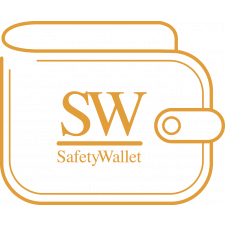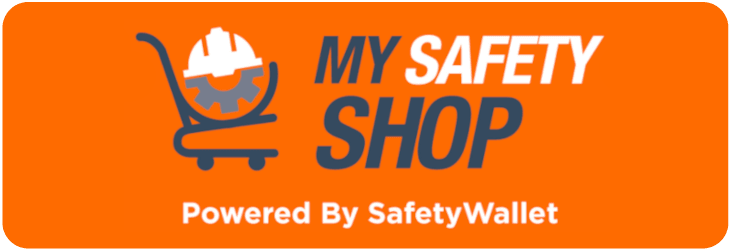Health and Safety Risk Assessment Meaning
Overview
It is the employer’s legal obligation to ensure that employees are protected from occupational risks to which they could be exposed. This can be done by implementing and following a risk management process, which involves:
- Risk analysis
- Risk assessment and risk control practices.
To effectively carry out a risk management process, it is crucial to have a clear understanding of health and safety risk assessment, the legal context, concepts, risk analysis, assessment, and risk control measures as well as the roles that are played by relevant participants.
Prevention of Occupational Risks
In the context of their general obligations, employers are required to take the necessary measures to ensure the health and safety protection of employees, including the prevention of occupational risks. This is a basic principle which is included in the legislation of many countries across the world.
To prevent occupational accidents as well as ill-health incidents, employers must perform a risk assessment associated with health and safety in the workplace and decide on the protection measures that must be implemented, and where necessary, the protective equipment to be used.
It is advisable for the risk assessment to be carried out every year, or as soon as there is a change introduced in the workplace.
Important Concepts
The concepts of hazard and risk are the most crucial where risk management is concerned. A hazard can be described as a source, situation, or act which has the potential for harm in terms of human injury or ill health. It can also be a combination of these and thus, a hazard is anything present in the workplace which has the potential to cause an injury, or ill-health incident.
There is a distinct difference between physical and psychosocial hazards:
- Physical hazards, for instance, can be working on a ladder, handling chemicals, or walking across a wet floor.
- Psychosocial hazards can be job content, job insecurity, bullying, harassment, or others as these hazards affect the health and wellbeing of employees.
Risk can be described as the combination of the likelihood of an occurrence of a hazardous event, or the exposure and the severity of an injury or ill health which may be caused by the event or the exposure.
From a psychosocial perspective risk can be described as the likelihood that psychosocial factors could have a hazardous influence on the health or wellbeing of an employee. This can result from their perceptions and experience along with the severity of ill health which can be caused by exposure to them.
Another concept in risk management refers to the acceptability of risk which revers to risks which have been reduced to a level that is considered tolerated by the organisation, having regard to its legal obligations and its own Occupational Health and Safety Policy.
Risk Management
Risk management can be regarded as an iterative and cyclic process. It is a systematic process which involves the examination of all characteristics attributed to the work system where workers operate, namely the workplace, along with the equipment, machines, materials, working methods, practices in relation to the work environment.
The purpose of risk management is to identify what could go wrong and to decide on adequate safety control measures to prevent work accidents and occupational diseases followed by their implementation.
Preparation
This involves the following activities:
- Identification of exposed workers which also involves workers who have special needs, maintenance workers, cleaners, contractors, and visitors to the premises.
- Characterisation of activities, equipment, materials, and work procedures.
- Identify and characterise safety measures currently in use.
- Identify work accidents and occupational diseases associated with the workplace in an analysis.
- Identify legislation, standards, or regulations that relate to the workplace in an analysis.
There are several means that can be used to support these activities such as the following:
- Direct observation while tasks are being performed by carrying out walkthroughs.
- Interviews with employees and managers.
- Evaluate records pertaining to accidents and occupational diseases.
- Evaluate technical data from equipment and machines.
- Examine MSDS associated with chemical substances used in the workplace.
- Consider legislation, standards, and company regulations that apply to the workplace.
Risk Analysis
These activities involve:
- Identify hazards present in the workplace.
- Identify hazards discovered in previous risk management.
- Identify potential consequences of recognised hazards – risks.
Several means that may be used to support such activities include, but is not limited to:
- Walkthroughs
- Interviews
- Checklists
- Deviation analysis
- Energy analysis
- Job safety analysis
- Previous risk assessment data
- Employee surveys
Risk Assessment
A risk assessment involves the process of evaluating the risks which arise from a hazard, considering the adequacy of existing controls and deciding whether or not the risks are acceptable.
There are several ways in which risk assessments can be performed, ranging from expert to participatory methodologies, and from single to complex methods. Risk assessment involves the evaluation, ranking, and classification of risks.
Risk Evaluation
This involves determining quantitative and/or qualitative values for risks. Quantitative risk evaluation involves the calculation of the two components of the risk:
- The probability that a risk will occur.
- The severity of the potential consequence.
Qualitative risk evaluation adopts a methodology which is based on a matrix. Risks are estimated according to their likelihood and potential severity of harm, combining both the severity and the likelihood.
Ranking of the risks evaluated
Based on the risk values which are determined during the risk evaluation phase, risks must be sorted and ranked according to their severity.
Classify risk acceptability
A decision regarding whether a risk is acceptable will result from the comparison of the obtained risk value with reference values which are defined according to relevant legislation.
Compliance with legislation is the bare minimum and employers are urged to do more than merely this. Decisions over whether a risk is acceptable must be supported on other knowledge sources as well such as standards, OHS guidelines, machine and equipment specifications, and numerous others, ensuring that the decision is informed.
To ensure that there is a consistent base for all risk assessments, it is recommended that the organisation establish the acceptability criteria. This can be achieved through consultation with employee representatives and other participants, considering legislation and all other forms of guidelines.
Risk Control
At this stage, actions to identify and implement safety measures to control risks are performed, keeping in mind the protection of the health and safety of employees. Risk control includes design, planning, and implementing control measures along with training and information.
Designing safety control measures
This involves the design of control measures to eliminate risks. Risks that cannot be avoided or eliminated must be reduced to an acceptable level.
Implement safety control measures
The control measures to be implemented must be based on an updated technical and/or organisational knowledge and best practice. Control measure implementation can be done using the following hierarchy order:
- Prevention
- Protection
- Mitigation
Prevention measures
This can be achieved by using engineering or technical measures to act directly on the risk source to:
- Remove it, reduce the levels of hazardous materials, or replace/substitute the risk by a less risky material, equipment, or substance.
These measures are more effective and economical when accomplished during the design phase for the work environment. Organisational and administrative measures can be used to force the changing of behaviour and attitudes so that a safety culture can be promoted through:
- Information and training
- Establishing work procedures and using supervision
- Management as well as proactive monitoring.
- Routine maintenance as well as housekeeping.
Protection measures
Such as:
- Collective protection including enclosing and isolating, physical barriers, using organisational and administrative measures such as job rotation of workers, timing the work, implementing safety signs.
- Personal Protective Equipment.
Mitigation measures
When preventative and protective measures fail, the organisation must be prepared and have mitigation measures in place. The aim of mitigation is to reduce the severity of damage to facilities and harm to employees.
Mitigation measures include emergency plans, evacuation planning, warning systems, testing emergency procedures, exercises, drills, and others.
Training and information
Employers are legally required to provide employees and all other persons with training and information. Employees have a right to know about the hazards that they are exposed to, the harm that may result from them, and the precautions in place to prevent such harmful effects.
Review and update
The risk assessment management process must be reviewed and updated regularly to ensure that safety measures implemented are adequate and effective. Additional measures may be necessary if improvements do not reflect the desired or expected results.
Documenting the process
It is a legal obligation for the risk assessment process to be documented as it serves as proof that the employer is compliant with their legal duties in terms of the Occupational Health and Safety Act, and all other regulations.
It also makes it easier to review and update the risk management system if everything is documented.
How does SafetyWallet support its subscribers?
SafetyWallet, in partnership with MAKROSAFE and OHS Online, ensures that subscribers can obtain the highest level of compliance with the Occupational Health and Safety Act, all other Regulations, and more.
MAKROSAFE / SAFETYWALLET / MY SAFETY SHOP are in Partnership.
Through the assistance and support in the health and safety program of the subscriber, SafetyWallet helps subscribers with the health and safety risk assessments that must be conducted to ensure that subscribers are compliant in providing a healthy and safe working environment.
Click on the image below to find a SafetyWallet Solution that suits your business (Branch/Site specific) and get the 21 benefits along with the subscription:
Keeping your workplace legally Health and Safety Compliant may seem like a daunting task. At MAKROSAFE, we have an experienced team of OHS experts available to assist in keeping your company Health and Safety Compliant according to South African Occupational Health and Safety Act 85 of 1993 and Regulations.
The MAKROSAFE Health and Safety Risk Control Package will assist you with your Risk Management Programme.
By signing up with our Health and Safety Risk Control Package, MAKROSAFE will assist you with your Risk Management journey.

-Health-and-Safety-Risk-Assessment-Meaning-Banner-1.jpg)






Comments (1)
Employers are legally required to provide employees and all other persons with training and information.
2022-11-04 13:33:00Dear Rubini Thank you for your positive comment... Follow this link for our Risk Assessment Training: https://www.mysafetyshop.co.za/Products/Risk-Assessment-Training---Per-Person
2022-11-07 08:40:13